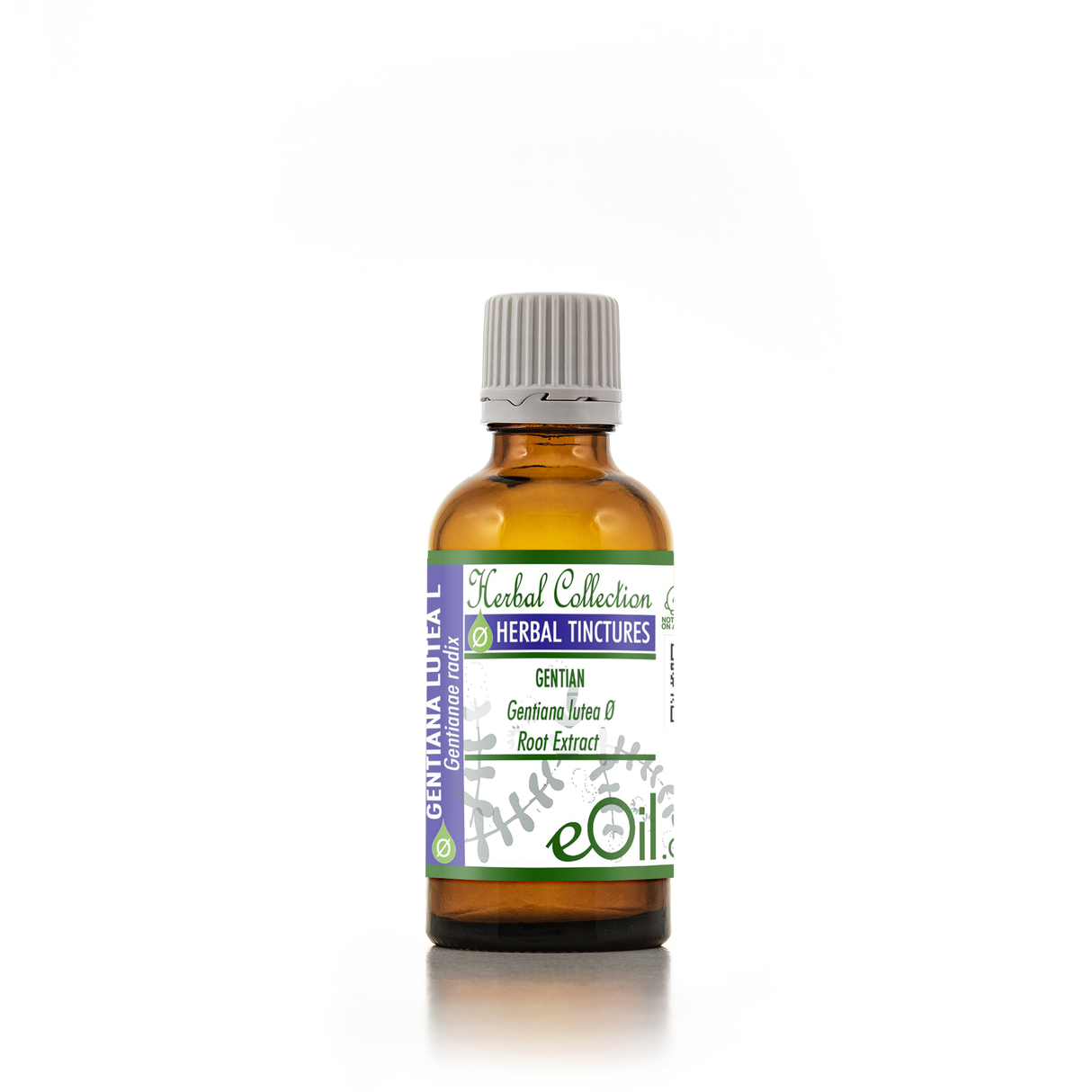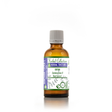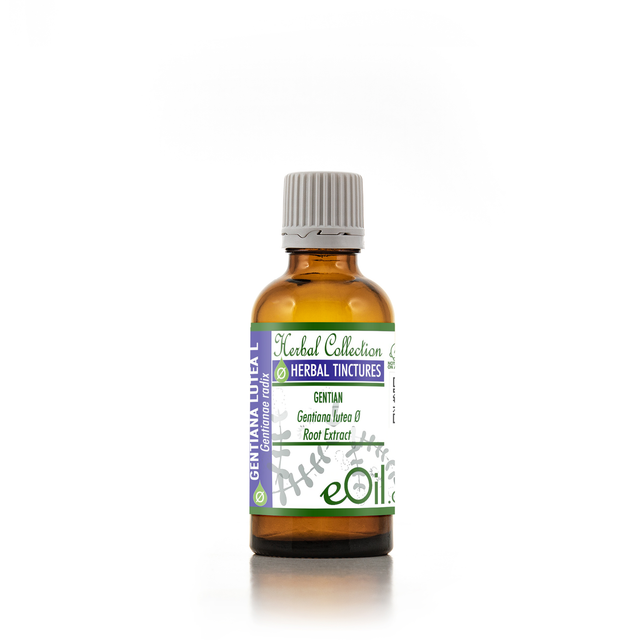Gentian - Liquid Herbal Extract
Gentian - Liquid Herbal Extract - 50ML is backordered and will ship as soon as it is back in stock.
Description
Description
Understanding Mother Tinctures & Glycerines
Gentian Liquid Herbal Extract (Gentiana lutea) is a traditional botanical known for stimulating appetite, supporting digestion, and promoting liver health.
With its naturally bitter taste, this pure extract is carefully formulated and ideal for pre-meal use or as part of digestive wellness routines
TRADITIONALLY USED FOR
Gentian Root (Gentiana lutea) Liquid Herbal Extract Tincture | Bitters for Digestion, Appetite & Liver Health | eOil.co.za
Fuel your digestive fire and support whole-body vitality with Gentian Root Herbal Extract—the classic “bitter tonic” that’s been trusted for centuries across Europe and herbal traditions worldwide.
Our potent liquid tincture is crafted for maximum absorption, transforming sluggish digestion and enhancing nutrient assimilation.
Key Benefits
- Potent Digestive Aid: Gentian root tincture is a gold-standard bitter that stimulates saliva, gastric juices, and bile flow, easing indigestion, bloating, gas, and discomfort after meals.
- Appetite Stimulation: Excellent for those with low appetite or recovering from illness—awakens taste and triggers hunger for better food intake.
- Liver & Gallbladder Support: Promotes bile secretion for optimal fat digestion and helps maintain liver health and gentle detoxification.
- Gut Health: Can reduce acid reflux, heartburn, indigestion, and help clear sluggish bowels and nutrient malabsorption for better energy.
- Traditional Use: Revered as a digestive tonic and restorative for convalescence, fatigue, and general weakness; historic applications for anemia, fever, and as a fortifying, circulatory stimulant.
Dosage & Directions
- Adults: Take 2–3 ml (40–60 drops) in a little water, 2–3 times daily, ideally 15–60 minutes before meals for best effect.
- For appetite support, take before meals. For digestive relief, may be taken after heavy meals.
- Do not exceed recommended dose. Not for use in pregnancy, breastfeeding, or children unless supervised by a healthcare professional.
Cautions & Contraindications
- Do not use if pregnant or breastfeeding; safety data is lacking.
- Not for anyone with stomach/duodenal ulcers, active gastric irritation, or acute GI inflammation—gentian increases stomach acid and could worsen these conditions.
- May lower blood pressure—use caution with antihypertensive medication.
- Avoid if allergic to Gentiana species or related plants.
- Possible side effects: Mild digestive upset, headache.
- Discontinue if you experience persistent discomfort, headache, or allergic reaction.
Storage
Store in a cool, dark place. Keep out of reach of children.
Disclaimer
This herbal extract is not intended to diagnose, treat, cure, or prevent any disease. Consult your healthcare provider before beginning any herbal routine.
INFORMATION
Source : http://www.wikiphyto.org/wiki/Gentian
Reference on http://www.wikiphyto.org
Translation in English by Google Translate (go to the page of the source linked | on Chrome cellphones go on the 3 dots on the top right and select translate in your preferred language | on laptop right click your mouse and select option translate when hoovering on the page
plant name
yellow gentian
International Latin denomination
botanical family
Gentianaceae
Description and habitat
- Beautiful vigorous mountain plant, sometimes 2 m high, with a long fleshy root
- Fistulous stems, glaucous green, broad oval leaves that can reach 30 cm, clasping towards the top, with prominent longitudinal veins
- The flowers are arranged in whorls in the axils of the upper leaves, corolla flared into 5 to 7 lobes of a bright golden yellow
- Risk of confusion before flowering with the Verâtre with alternate leaves whereas those of the Gentian are opposite
History and tradition
- Base of many aperitifs
- Note: gentian violet is a violet dye, a mixture of methyl violets (Paris violet, methyl violet), used mainly in microbiology in Gram staining
Parts used
Racine
Dosage forms available
- Underground Part Tincture
- EPS
- Dry extract
- Fluid extract
- Specialties
Usual dosages
Composition
Main components of the plant
- Secoiridoids : bitter principles with lactone function : gentiopicroside ( gentiopicrin ) majority (1 - 3%), swertiamaroside ( swertiamarin ), amarogentioside ( amarogentin ) with the highest bitterness index, amaroswerine , swertiamarin , sweroside
- Iridoids : loganic acid [1]
- Xanthones : gentisine , isogentisine , gentioside , mangiferine
- Phytosterols , phenol acids
- Oligosaccharides ( gentiobiose , gentianose , original sugars contributing to bitterness), pectins
- Pyridine alkaloids : gentianine
Main components of buds or young shoots
Main components of essential oil
Properties
Plant properties
- Eupeptic, anti-gastralgic: acts upon ingestion, gentian stimulates secretions and motility of the stomach, but at high doses, it can cause vomiting, anti- Helicobacter pylori in vitro [2]
- Antipyretic
- Antipsychotic (?), antidepressant, gentisin and other xanthones are MAO mono-amine oxidase ( chalcones , 5-hydroxyflavanone ) inhibitors [3] , inhibits the reserpine-induced pain/depression dyad by down-regulating the GluN2B receptors in the amygdala [4]
- According to Kurt Hostettmann, the activity is especially marked in Gentiana campestris L.
- Analgesic ( gentiopicroside [5]
- Tonic, improves endurance tests in mice [6]
- Vulnerary, anti-inflammatory [7] , fibroblastic action [8]
- Amarogentine and amaroswerine are among the most bitter substances known , since their bitterness index is close to 58,000,000 (the bitterness index is the inverse of the greatest dilution for which the bitterness is still detectable; for comparison, for quinine in hydrochloride form, the index is 200,000)
Bud properties
Properties of essential oil
Indications
Indications of the whole plant (phytotherapy)
- Indigestions
- Digestive disorders
- Nervous breakdown
Indications of the bud (gemmotherapy)
Specific indications of essential oil (aromatherapy)
Known or suspected mode of action
- Bitterness triggers, upon contact with the oral mucosa, a reflex conveyed by the vagus nerve which induces the secretion of digestive juices
- Parasympathomimétique
Usual formulations
Regulations
- French Pharmacopoeia list A (underground part)
Possible side effects and precautions for use
Bibliographic references
- Go↑ Aberham A, Schwaiger S, Stuppner H, Ganzera M. Quantitative analysis of iridoids, secoiridoids, xanthones and xanthone glycosides in Gentiana lutea L. roots by RP-HPLC and LC-MS. J Pharm Biomed Anal. 2007 Nov 5;45(3):437-42. PMID 17697760
- Go↑ Mahady GB, Pendland SL, Stoia A, Hamill FA, Fabricant D, Dietz BM, Chadwick LR. In vitro susceptibility of Helicobacter pylori to botanical extracts used traditionally for the treatment of gastrointestinal disorders. Phytother Res. 2005 Nov;19(11):988-91.PMID 16317658
- Go↑ Haraguchi H, Tanaka Y, Kabbash A, Fujioka T, Ishizu T, Yagi A. Monoamine oxidase inhibitors from Gentiana lutea. Phytochemistry. 2004 Aug;65(15):2255-60. PMID 15587710
- Go↑ Liu, Sb., Zhao, R., Li, Xs. et al. Attenuation of Reserpine-Induced Pain/Depression Dyad by Gentiopicroside Through Downregulation of GluN2B Receptors in the Amygdala of Mice. Neuromol Med 16, 350–359 (2014). https://doi.org/10.1007/s12017-013-8280-8
- Go↑ Lei Chen, Jin-cheng Liu, Xiao-nan Zhang, Yan-yan Guo, Zhao-hui Xu, Wei Cao, Xiao-li Sun, Wen-ji Sun, Ming-Gao Zhao. Down-regulation of NR2B receptors partially contributes to analgesic effects of Gentiopicroside in persistent inflammatory pain. Neuropharmacology, 2008 Jun;54(8):1175-81. doi: 10.1016/j.neuropharm.2008.03.007. PMID 18410946
- Go↑ Nilgün Öztürk, K Hüsnü Can Başer, Süleyman Aydin, Yusuf Öztürk, Ihsan Çaliş. Effects of Gentiana lutea ssp. symphyandra on the Central Nervous System in Mice. Phytotherapy Research, Volume 16, Issue 7, pages 627–631, November 2002. PMID 12410542
- Go↑ A. Mathew, A.D. Taranalli, S.S. Torgal. Evaluation of Anti-inflammatory and Wound Healing Activity of Gentiana lutea Rhizome Extracts in Animals. Informa Healthcare, 2004, Vol. 42, No. 1 , Pages 8-12
- Go↑ Oztürk N, Korkmaz S, Oztürk Y, Başer KH. Effects of gentiopicroside, sweroside and swertiamarine, secoiridoids from gentian (Gentiana lutea ssp. symphyandra), on cultured chicken embryonic fibroblasts. Planta Med. 2006 Mar;72(4):289-94. PMID 16557467
- Clade Jean-Louis, Jollès Charles. Gentian, the adventure of the yellow fairy. Ed. Cabedita
- Hostettmann K. Gentians: new therapeutic indication? European phytotherapy. 2002, no.11, pp. 5-7
- Hostettmann K, Marston A. St. John's wort and gentian, herbal antidepressants. European phytotherapy. 2004, no.20, pp. 5-7
CAUTION
Store in a cool, dry place, away from light. Keep tightly closed, away from the reach of Children and pets.
Do not exceed the daily dose.
This product is not intended to prevent or cure any form of illness or disease.
If you are pregnant or nursing ; If you have a medical condition or are in the course of medical treatment ; If you are programmed for theater/operation in the near future, please consult your healthcare practitioner before using this product.
This product cannot replace a varied and balanced diet and a healthy lifestyle.
This product has not been evaluated by the SAHPRA for its quality, safety or intended use.
For More Information please check our General Safety Herbal products Page

Gentian - Liquid Herbal Extract - 50ML is backordered and will ship as soon as it is back in stock.





